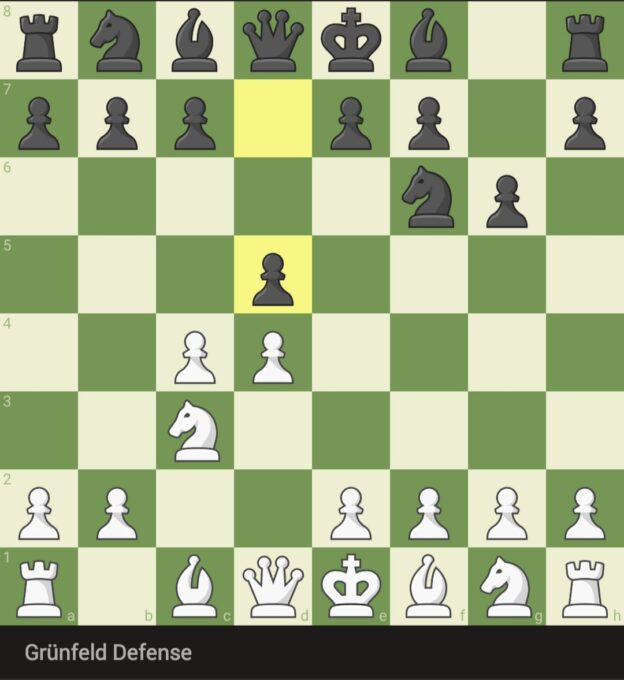In the vast landscape of chess openings, the Grünfeld Defense stands out as a symbol of dynamic and counterattacking play. Revered for its strategic complexity and the potential for creating rich middlegame positions, the Grünfeld has long been a favorite choice of grandmasters and creative players. This essay explores the history, principles, and enduring appeal of the Grünfeld Defense.
Historical Origins:
The Grünfeld Defense, named after the Austrian grandmaster Ernst Grünfeld, made its chess debut in the early 20th century. Ernst Grünfeld, along with other leading players of his time, championed this opening as a means to challenge the central control established by White in 1.d4 openings. The Grünfeld’s central idea involves allowing White to build a strong pawn center with the intention of undermining it later.
Key Moves and Variations:
The Grünfeld Defense typically arises after the opening moves 1.d4 Nf6 2.c4 g6 3.Nc3 d5. This pawn structure immediately challenges White’s central pawns while also preparing for piece development. Various subvariations, including the Russian System, Exchange Variation, and Fianchetto Variation, offer different strategic ideas and complexities.
Principles and Characteristics:
- Central Challenge: The Grünfeld is marked by its central challenge. Black allows White to build a formidable pawn center, often consisting of pawns on d4 and e4. Black’s strategy revolves around undermining this center using well-timed pawn breaks and piece activity.
- Piece Activity: Grünfeld positions require precise piece coordination. The knight on f6, the bishop on g7, and the central pawns on d5 and e6 create a harmonious setup, enabling Black to launch rapid counterattacks and control key central squares.
- Imbalanced Positions: One of the defining features of the Grünfeld is its potential for imbalanced positions. Both sides often engage in sharp tactics and strategic maneuvers, creating dynamic and rich middlegame positions. This complexity allows players to express their creativity and tactical acumen.
Modern Relevance:
The Grünfeld Defense remains highly relevant in contemporary chess. It is a popular choice among top-level players and a staple of chess theory. Its enduring appeal lies in its capacity to create double-edged positions that offer winning chances for both sides, making it a preferred opening for those seeking a dynamic, fighting game.
Famous Practitioners:
Throughout its history, the Grünfeld Defense has been employed by renowned chess players. Legends like Garry Kasparov and Bobby Fischer have showcased its power and complexity in their games, demonstrating that the Grünfeld can be a potent weapon even at the highest levels of play.
Conclusion:
The Grünfeld Defense is a masterpiece of chess strategy. Its ability to challenge central control, its emphasis on piece activity, and its capacity to create imbalanced positions make it a favorite among players who relish the opportunity to engage in complex and dynamic battles on the chessboard. Beyond its theoretical richness, the Grünfeld is a reminder that chess is a dynamic art form, where strategy and tactics intertwine to create a tapestry of creativity and intellectual depth.
